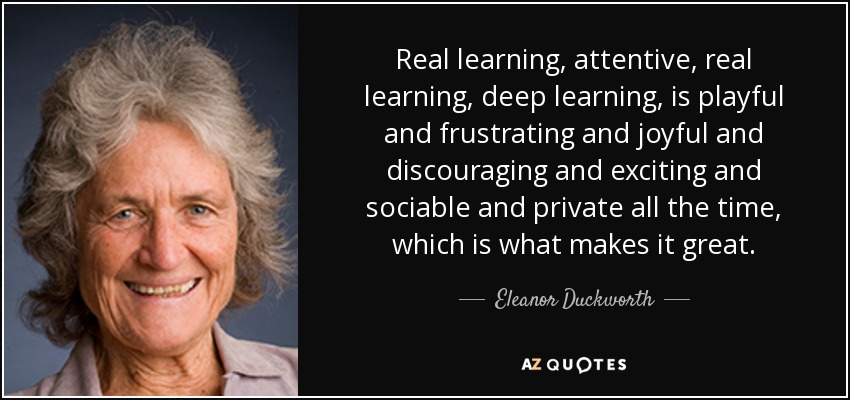Circling back to the basics, I investigated some of what Piaget has to say about prior knowledge and its impact on learning. Just as I read through his work, I read along with some of Ball's research on the impact of teacher's expectations of mathematics on the effectiveness of their instruction. This connection helped me to make one of the most important discoveries in my research- how both student and teacher are learners in the classroom, and the prior knowledge that both parties bring to the lesson impact their expectations and learning at all moments.
First, Piaget, who starts with young students and their first learning experiences with means-ends actions. As children grow, they learn that specific actions can lead to a more desirable second action. They create schemas and expectations. As a result, their learning from this desired action is shaped by the previous action- prior knowledge and experience.
“perform one action in order to do a second action…the
second action is usually the more desirable action” (Piaget, 27)
“Means-ends sequencing is essential to adult intellectual
functioning because it’s what allows us to make plans about the future”
(Piaget, 27)
“Old schemas aren’t activated for their own sake, they are
activated for the sake of making other schemas possible” (Piaget, 32)
And then, with Ball, and the expectations of teachers in mathematical education. Teachers approach math with ideas that impact their teaching- the concept is difficult, students will struggle, etc. Just as with students prior knowledge, the teachers enter their classroom with experiences and opinions that impact their teaching.
“Mathematics does not have much relationship to the real
world and most mathematical ideas cannot be represented any way other than
abstractly, with symbols” (Ball, 4)
“prospective teachers also bring ideas of what mathematics is—what
it is about, what it is good for, where it comes from, and how right answers
are established—that shape their understanding of and approach to the subject”
(Ball, 10)










